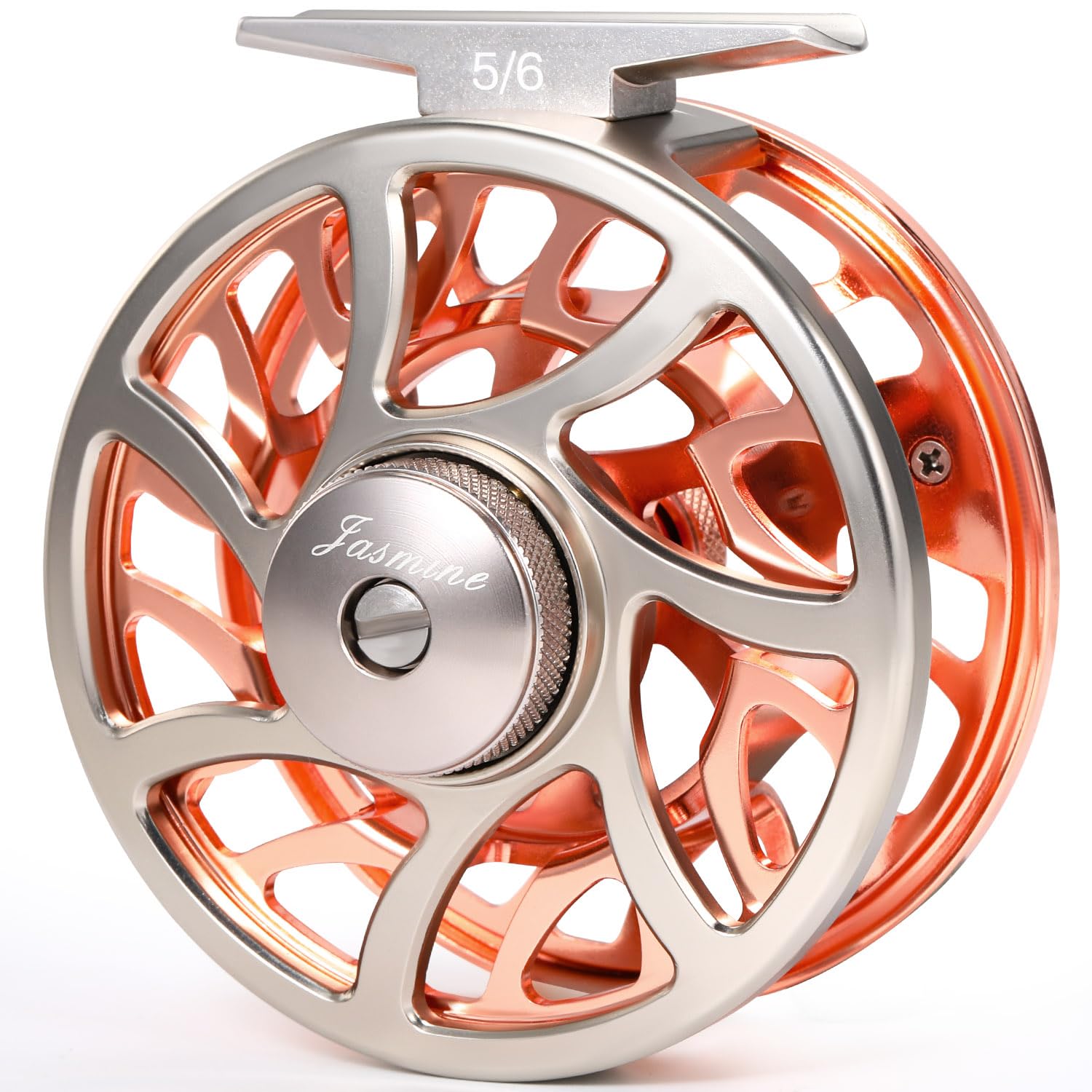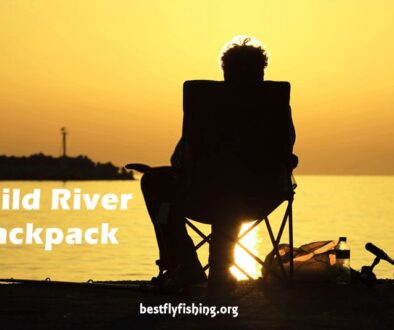Fly Fishing Reels Guide

Fly fishing reels are essential tools for anglers who want to catch fish using fly rods. These reels hold the fishing line and help control the line during casting and retrieval. Unlike regular fishing reels, fly fishing reels are designed specifically to work with fly lines, which are thicker and heavier.
A good fly fishing reel balances well with the rod and offers smooth drag to manage fish without breaking the line. They come in different sizes and materials, often made from aluminum or composite materials. Choosing the right reel depends on the type of fish you want to catch and the environment you’ll be fishing in, such as freshwater or saltwater.
Fly Fishing Reels Guide for Choosing the Perfect Reel in 2025

Table of contents
When picking a fly fishing reel, the key things to watch for are weight, drag system, and durability. Weight matters because a heavy reel can throw off your casting balance. The drag should be smooth and strong enough to hold a fish during the fight. Durability is also important, especially if you fish in saltwater, where corrosion is a risk. Understanding these factors will help us find reels that match different fishing needs. Next, we will look at the main types of fly fishing reels and what makes each one suited for certain uses.
Best Fly Fishing Reels
We have reviewed a range of fly fishing reels to help you find the right one for your needs. Our list includes reliable and durable options for different skill levels and budgets. Explore the best reels to improve your fly fishing experience.
Piscifun Sword Fly Reel

This reel offers solid build quality and smooth drag at a price that makes sense for many anglers.
Pros
- Lightweight but durable aluminum body
- Smooth, adjustable disc drag system
- Easy switch between left and right hand retrieve
Cons
- Drag can feel either fully locked or free spinning
- Some users note a lighter, less premium feel
- Lacks drag click sound for precise adjustment
The Piscifun Sword reel stands out for its strong build with cold-forged aluminum that resists corrosion. It’s designed to be light yet tough, which helps when chasing fast fish.
We appreciate the mid-arbor design because it helps reduce line memory and speeds up line retrieval. This feature improves casting and handling especially in rapid fishing situations.
The drag system works quietly and smoothly, which protects light tippets without giving up stopping power. However, some find the drag adjustment a bit on/off instead of gradual.
The reel comes preloaded with quality fly line and backing, saving time for those who want to get fishing right away. Plus, the ambidextrous design means it can fit any angler’s preference.
Overall, it’s a good option for fly fishers who want a reliable reel without paying for big brand names. We see it as a practical choice for both new and experienced anglers.
Maxcatch ECO Fly Reel

We think this reel is a solid choice for beginners and as a backup for more experienced anglers because it offers good value and durable build.
Pros
- Strong all-aluminum body with large arbor for quick line pickup
- Smooth, rugged drag system handles fish well
- Comes pre-loaded with fly line, backing, and leader
Cons
- Drag only works effectively in one direction
- Some users find the drag lacks resistance when pulling line out
- Not the best option if you need advanced features
This reel is built to last with a polished die-cast aluminum frame, making it tough for regular use. The large arbor design helps retrieve line faster, which is handy when fighting fish.
The Teflon disc drag and stainless steel system create a smooth pressure that controls the fish without sudden jerks. It’s made for ease, featuring a one-way bearing that lets you quickly switch hand retrieval from left to right.
Although it’s labeled ambidextrous, the drag may spin freely when pulling line out, which could be a downside for some. For the price, we find this reel offers excellent quality and performance if you want a reliable, budget-friendly setup.
Buy the Maxcatch ECO Fly Reel here.
Sougayilang 5/6 Fly Fishing Reel

We think this reel offers solid value and reliable performance for anglers looking for a lightweight and durable option.
Pros
- Made from tough aircraft-grade aluminum
- Smooth drag system with instant engagement
- Good balance for trout and freshwater fishing
Cons
- Drag setup instructions could be clearer
- Limited line capacity for bigger fish
- Slightly heavier than some ultra-light reels
The Sougayilang reel stands out with its strong, corrosion-resistant frame. It’s built from aircraft-grade aluminum and finished to resist wear and weather, which adds to its lifespan.
The drag system uses multi-disc carbon and stainless steel for smooth, quiet operation. This helps maintain control when reeling in a catch without sudden jerks.
While it fits well for smaller trout and general freshwater use, its size and line capacity make it less ideal for large, powerful fish. We also noticed the setup instructions, especially for changing handle sides, might confuse some users.
Overall, this reel gives a well-made and versatile option suitable for beginners or those upgrading without spending too much.
Martin Caddis Creek Fly Reel

We find this reel to be a solid choice for anglers seeking a durable and versatile fly reel with easy drag control.
Pros
- Lightweight yet strong aluminum build
- Ambidextrous for right or left-hand use
- Comes pre-spooled with backing, line, and leader
Cons
- Small arbor can slow line retrieval
- Packaging issues reported by some buyers
- Drag control can feel basic compared to higher-end reels
The Martin Caddis Creek reel offers a good balance between durability and weight. The aluminum frame and spool keep it light while standing up to regular use. The metal click drag gives audible feedback, which helps us keep track of line movement without surprises.
Switching the handle from right to left is simple, making the reel user-friendly for all anglers. The pre-spooled setup means we spend less time preparing and more time fishing. It suits a variety of light to medium freshwater fish like trout, bass, and panfish.
Some users mention the smaller arbor size slows down the winding process, which could be a minor drawback depending on preference. Additionally, a few buyers had concerns about packaging durability during shipping. Overall, the reel performs as expected for its price range and is versatile enough for many fishing situations.
Buying Guide
When we pick a fly fishing reel, we focus on a few key features to make sure it fits our needs. Size is important because it must match our rod and the type of fish we want to catch.
We look for drag systems that are smooth and reliable. A good drag helps us control the fish without damaging the line. We prefer reels with adjustable drag so we can make small changes easily.
Weight matters. A heavy reel may tire us out, but a very light one might feel cheap or less durable. We want a balance that feels comfortable during long fishing trips.
Materials also play a big role. Aluminum reels are strong and last long, while graphite reels are lighter but may wear faster. We consider where we will fish most often—freshwater or saltwater—as this affects the material choice.
| Feature | What to Look For | Why It Matters |
|---|---|---|
| Size | Matches rod and target fish | Proper balance and control |
| Drag System | Smooth, adjustable drag | Helps manage fighting fish |
| Weight | Balanced for comfort | Prevents arm fatigue |
| Material | Aluminum or graphite | Durability and weight |
We also check the reel’s capacity to hold enough line. More capacity is better for bigger fish or longer casts. Lastly, the reel’s design should be simple to use and easy to maintain.
No products found.
Frequently Asked Questions
Choosing the right fly fishing reel depends on factors like the type of fish, skill level, and where we fish. We also need to consider brand reputation, reel features, and how to care for our equipment.
We should look for a lightweight reel with a smooth drag system. The reel size should balance with a 3-6 weight rod. Durable materials like aluminum help with long-lasting use.
Beginners should pick reels that are easy to use and affordable. More advanced anglers may want reels with better drag systems and stronger construction. Match the reel to your typical fishing conditions.
Saltwater reels need corrosion-resistant materials like anodized aluminum. They usually have stronger drag systems to handle larger fish. Freshwater reels can be lighter and less resistant to salt damage.
Fly fishing reels store your fly line and backing. As you cast, the line unspools freely. When retrieving or fighting a fish, the reel’s drag system helps apply tension, preventing the line from being pulled out too quickly.
Large arbor reels have bigger spools, allowing for faster line retrieval and less line memory.
Standard arbor reels are smaller, slower to retrieve, and usually more compact.
Large arbor is often preferred for improved performance, especially when fighting fast fish.
If you’re an occasional angler, a budget reel will often suffice. But if you’re fishing in challenging conditions (like saltwater) or targeting large, strong fish, a higher-end reel with a sealed drag system and durable materials can be worth the cost.
After freshwater use: Rinse gently with fresh water and dry.
After saltwater use: Rinse thoroughly and inspect for corrosion.
Regular maintenance: Lubricate moving parts, clean the drag system if not sealed, and store in a cool, dry place.
The drag system applies resistance when a fish pulls line from the reel. It helps prevent break-offs and tires the fish. There are two main types:
Click-and-pawl (simple, for small fish)
Disc drag (stronger, smoother, adjustable)
A 3 to 6-weight reel is best, depending on the size of the trout and waters you’re fishing. Look for a reel with a smooth, adjustable drag system, and match it to your rod weight.
Sealed drag systems protect the internal components (discs, springs, etc.) from water, grit, and salt. They’re low-maintenance, high-performance, and ideal for both freshwater and saltwater anglers.
Backing is a thin, strong line that goes on the reel before the fly line. It adds extra length in case a fish makes a long run and helps fill the spool for better retrieval speed and drag performance.

